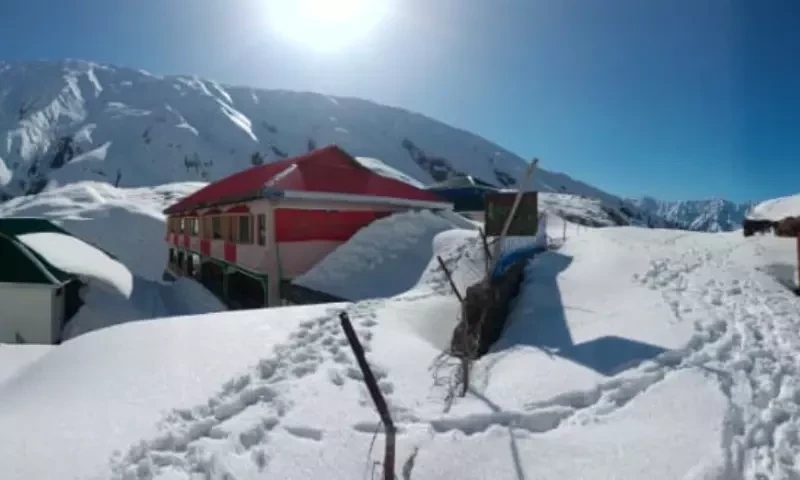While much of Pakistan endures a relentless heatwave, the Kaghan Valley in the north presents a stark contrast with unexpected snowfall in June, transforming its landscape into a winter wonderland.
This unusual phenomenon has attracted tourists seeking relief from the scorching temperatures of the plains, as they flock to the higher altitudes of Kaghan to experience this rare spectacle.
The untimely snowfall has not only delighted visitors but has also disrupted local events, such as the postponement of the renowned Shandur Festival in the northern areas. Similarly, Murree, a popular hill station nearby, is experiencing refreshing rainfall, enhancing the overall pleasantness of the atmosphere in the region.
However, amidst the awe and delight brought by this unconventional weather, concerns about climate change loom large.
Pakistan is witnessing significant shifts in its weather patterns, characterized by unpredictable snowfall in higher elevations and erratic rainfall across the country. These changes are symptomatic of broader global warming trends, which are causing polar ice caps to melt and leading to accelerated glacier retreat in Pakistan.
Pakistan, with more than 7,000 glaciers, holds the distinction of having the largest number outside the Arctic and Antarctic regions. The rapid melting of these glaciers poses multifaceted risks, including sudden surges in river water levels that trigger destructive floods, jeopardizing agriculture and displacing millions of people.
As one of the top ten countries most vulnerable to climate change impacts, Pakistan faces a critical challenge in mitigating these effects and adapting to the evolving climate conditions.
The juxtaposition of snowfall in June against a backdrop of sweltering heat underscores the urgency of addressing climate change and implementing sustainable practices to safeguard Pakistan’s environment and communities from future upheavals.










